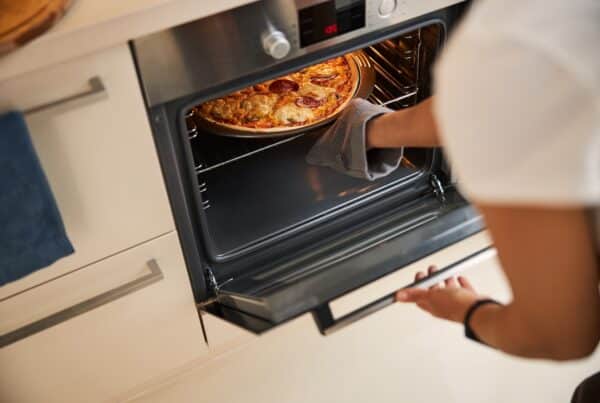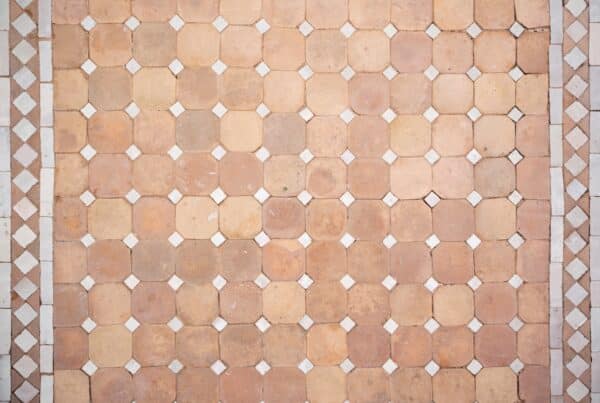
Mold isn’t just unsightly; it can also pose serious health risks if left unchecked. We often associate mold with organic materials, but you may wonder, can it grow on inorganic surfaces like concrete?
The short answer is yes. Mold can thrive on concrete, leading to potential health concerns and even compromising the integrity and safety of the structure. In the sections below, we’ll look closer at how mold grows on concrete, address the issue, and prevention steps.
Understanding the Risk
While concrete is a robust and seemingly impervious material, it is not exempt from the clutches of mold growth. The presence of mold on concrete surfaces can lead to several issues. Mold can cause the concrete to deteriorate faster, as it holds moisture against the surface, leading to potential cracking and weakening of the structure.
This deterioration not only compromises the aesthetics and structural integrity of concrete installations, such as patios, walkways, and driveways but can also become slippery and hazardous to walk on, increasing the risk of accidents.

Conditions for Mold Growth on Concrete
Mold finds a way to grow on concrete by capitalizing on specific conditions:
- Moisture: Crucial for any mold growth, moisture can accumulate on concrete surfaces from rain, humidity, or spills.
- Oxygen: Mold needs oxygen to thrive, which is readily available in most environments.
- Nutrients: Although concrete is not a natural food source, mold can feed on dirt, algae, or other organic materials that collect on the concrete.
- Temperature: Most molds grow in temperatures ranging from 40°F to 120°F, which are common in many climates.
Mold or Efflorescence?
When you spot a white, chalky substance on concrete, it might not be mold—it could be efflorescence. Efflorescence is a collection of minerals that comes from within the concrete itself. As water moves through the concrete and evaporates on the surface, it leaves these minerals behind, creating a white, powdery residue.
Here’s a simple way to tell the difference between efflorescence and mold:
- Efflorescence: It dissolves when you wet it because it’s just mineral salt. If you spray some water on it and it vanishes, it’s likely efflorescence.
- Mold: Mold won’t dissolve with water. It’s a living organism that looks fuzzy or slimy and sticks around even when wet.
Understanding this difference is crucial because while efflorescence is mostly a cosmetic issue, mold can be a health hazard and requires a different approach for removal and prevention.

Addressing Mold on Concrete
When dealing with mold on concrete, it’s important to approach the issue methodically to ensure complete removal and to prevent future growth. Here’s a simplified guide to tackling mold on concrete surfaces:
Prepare and Assess
Before you begin, protect yourself and anyone else working in the area. Wear gloves, a mask, and protective eyewear to prevent mold spores from causing any potential health issues.
Then, determine the extent of the mold growth. A small area might be a DIY job, but large or widespread mold should be handled by experts with the necessary training to address the issue safely.
Cleaning Small Areas
For minor mold problems, you can use household products:
- Vinegar Solution: Mix white vinegar with equal parts water and spray onto the affected concrete. Allow it to sit for at least an hour before scrubbing with a stiff brush.
- Baking Soda: After the vinegar solution, apply baking soda to the area to neutralize the odor and further disinfect the surface.
- Rinse and Dry: Rinse the area thoroughly with water and allow it to dry completely. A wet vacuum can help remove excess water.
Addressing Larger Infestations
For more significant mold issues, you might need a stronger approach, such as:
- Commercial Mold Removers: There are products specifically designed to tackle mold on concrete. Follow the instructions carefully.
- Pressure Washing: For outdoor concrete in particular, pressure washing can be effective at removing mold. Use a solution approved for killing mold in the water for the best results.
Recommended Preventative Steps
To effectively prevent mold growth on concrete, it’s imperative to address the primary catalyst: moisture control. Ensuring proper drainage and sealing the concrete with a mold-inhibiting product can greatly reduce the risk of mold development.
Regularly cleaning surfaces to remove potential mold food sources like dirt and organic debris also plays a critical role. In climates with a wide temperature range conducive to mold growth, be vigilant about these cleaning and maintenance routines.
It’s also essential to differentiate between mold and efflorescence, as they require different handling methods. While efflorescence is a mineral deposit that can be washed away, mold is a biohazard that must be removed with appropriate cleaning agents and techniques.
When to Call a Professional
If you encounter an extensive area of mold, or if it’s located in an indoor space where air quality is a concern, it’s time to seek professional help. Specialists in mold remediation have the tools, knowledge, and protective gear to effectively and safely remove mold, particularly in cases where the infestation is deep-seated or has been recurring despite previous cleaning efforts.
Professionals not only address the existing mold but also help identify the underlying causes of moisture accumulation that supports mold growth. By correcting these issues, they can provide a long-term solution that may not be achievable through DIY methods. This is especially important if the affected area is expansive or if the mold is of a variety that poses significant health risks, such as black mold. In such cases, professional mold remediators will also ensure that spores do not spread to other areas during the removal process.
Conclusion
To summarize, while mold can grow on concrete and be a nuisance, understanding the conditions that foster its growth and implementing effective prevention strategies can keep your surfaces clean and safe. For minor outbreaks, simple household remedies may suffice. However, for those facing stubborn or extensive mold, professional intervention is the soundest path to not only reclaiming your space but also safeguarding it for the future.
To get expert assistance with an existing issue or a proactive inspection of your home, schedule online with All Coast Home Inspections today!



